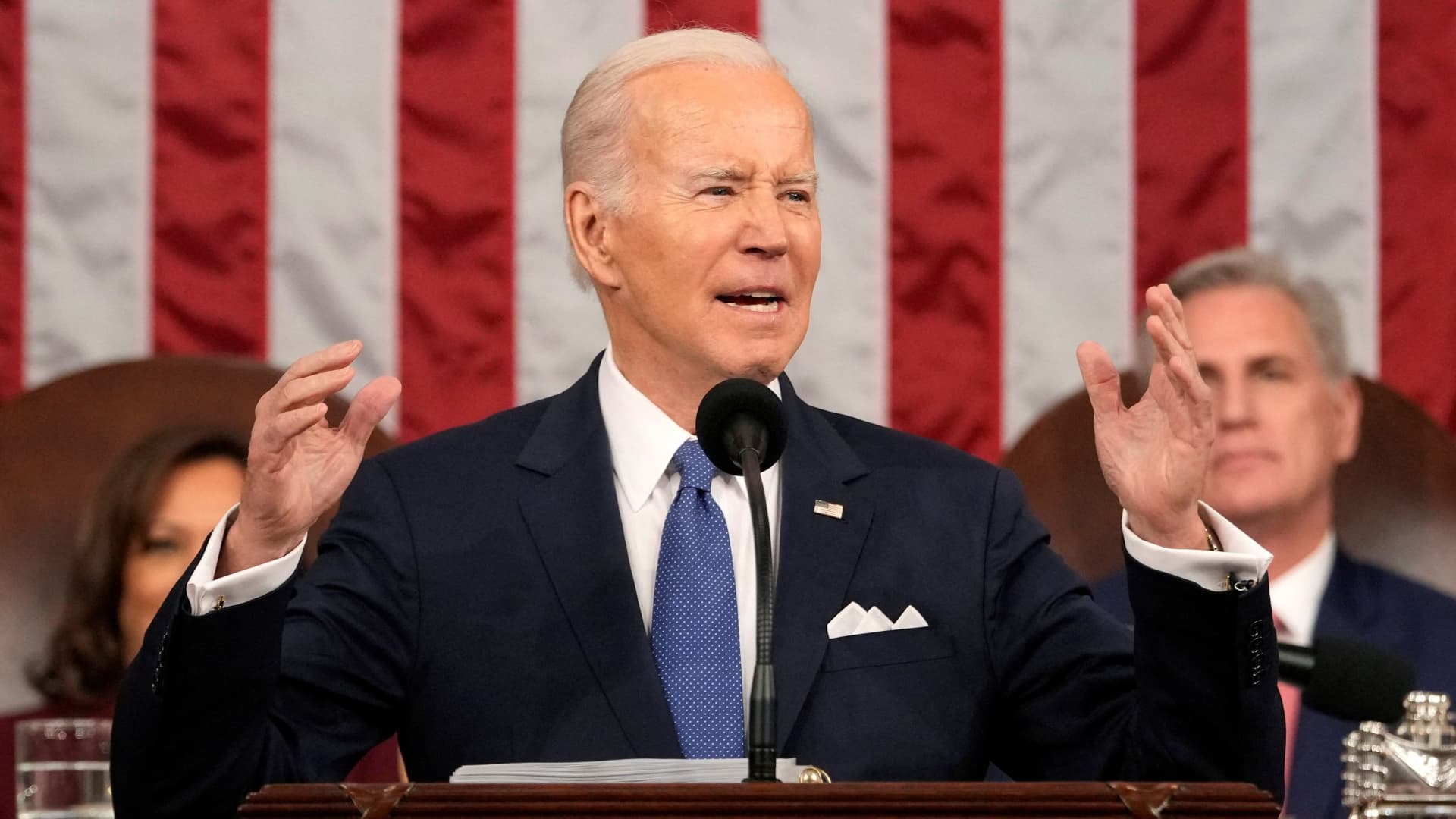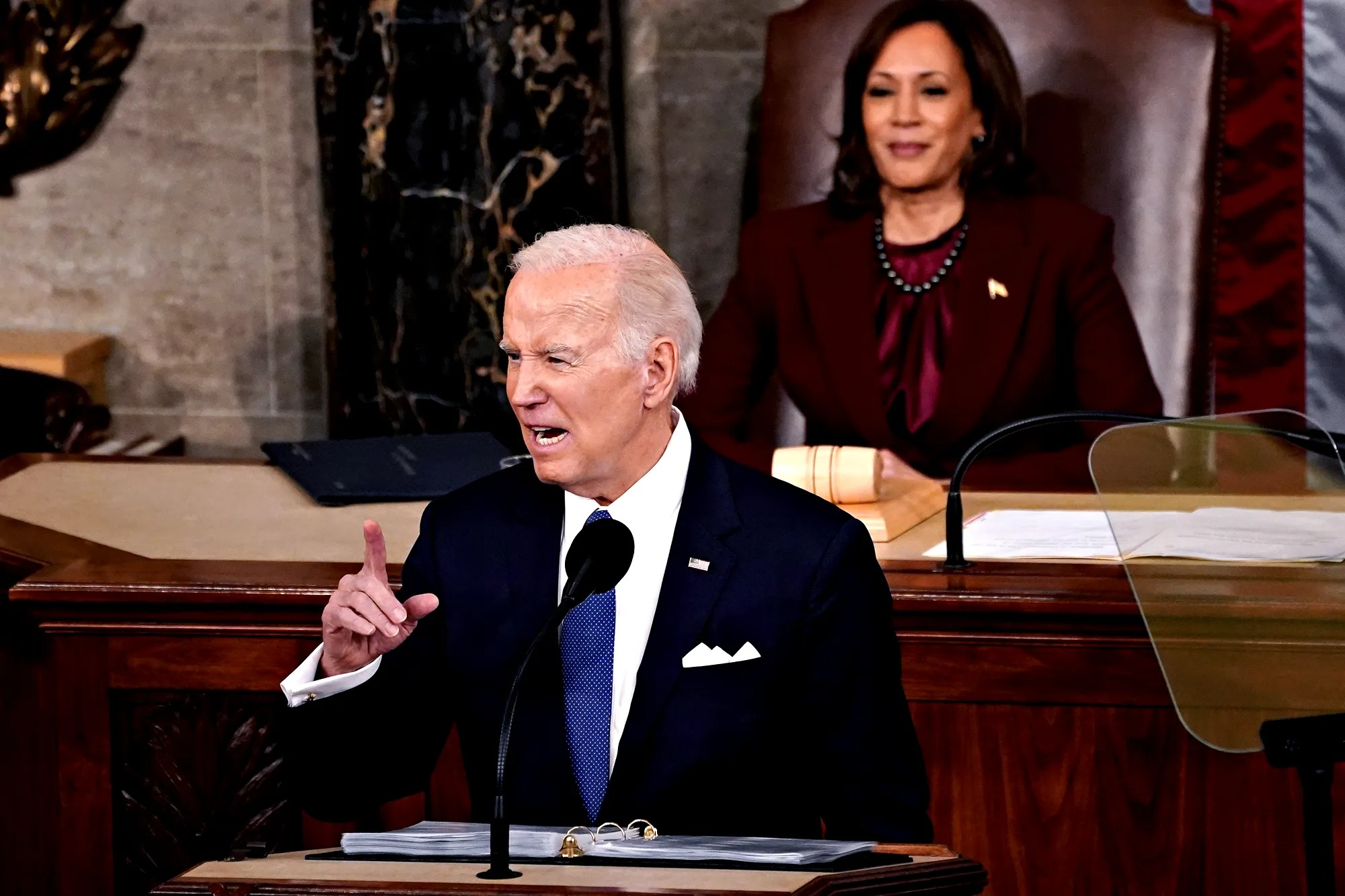The robust job growth in January not only strengthens President Joe Biden’s narrative of a robust economic recovery under his administration but also likely closes the door on the Federal Reserve implementing an interest rate cut next month, a move advocated by some on Wall Street and Democrats as inflation eases.
The latest report from the Labor Department, released on Friday, revealed a net gain of 353,000 jobs in January, surpassing economists’ predictions.
Unemployment remained at an impressive 3.7 percent, near a half-century low. Furthermore, labor market growth for November and December was revised upwards.

Biden’s Pursuit of the Holy Grail (Credits: CNBC)
EY-Parthenon chief economist Gregory Daco described the current economic climate as the “holy grail of non-inflationary growth,” with the economy advancing at a healthy pace while inflation is trending down, aligning with the Federal Reserve’s target.
Despite this strong job market and the easing of inflation, some economists still anticipate slower growth this year. However, the January job growth counters the narrative pushed by former President Donald Trump and other Republicans, who argue that the economy is weakening.
The optimistic economic outlook has prompted calls from Democrats, including Senate Banking Chair Sherrod Brown, for the Federal Reserve, led by Chair Jerome Powell, to consider interest rate cuts to prevent a potential slowdown. Brown cited challenges faced by small businesses and the housing market due to the highest interest rates in over two decades.
Powell, however, expressed a desire to observe sustained lower levels of inflation before considering rate cuts. While he indicated that the Fed was unlikely to lower borrowing costs in March, he acknowledged that higher unemployment could lead to a reassessment.
The latest job market numbers, indicating strong growth, suggest that such a reassessment is less likely.
The Federal Reserve faces the challenge of sustaining growth without stifling it through elevated interest rates while remaining vigilant against potential inflationary pressures.
Data on productivity, measuring worker output per hour, showed a 3.2 percent increase in the last quarter of the year, suggesting the economy can grow without fueling inflation. The Federal Reserve Bank of Atlanta’s GDP model predicts the U.S. economy will grow by 4.2 percent this quarter.
While political polls indicate most voters disapprove of Biden’s handling of the economy, there are signs that Americans are growing more optimistic about the trajectory.
Consumer confidence, measured by the Conference Board, reached its highest level since December 2021, reflecting factors like slower inflation, anticipated lower rates, and favorable employment conditions.
Jared Bernstein, head of Biden’s Council of Economic Advisers, highlighted that wages are growing faster than prices, expressing the belief that implementing Biden’s agenda will contribute to a strong job market where wage growth outpaces inflation, positively influencing people’s perceptions of the economy.
However, some underlying signs of weakness persist. Julia Pollak, chief economist at ZipRecruiter, pointed out a decrease in the length of the workweek to 34.1 hours, signaling potential employer demand reduction amid challenging weather conditions in January.
This drop in the workweek raises concerns about possible job cuts if consumer demand weakens further.























